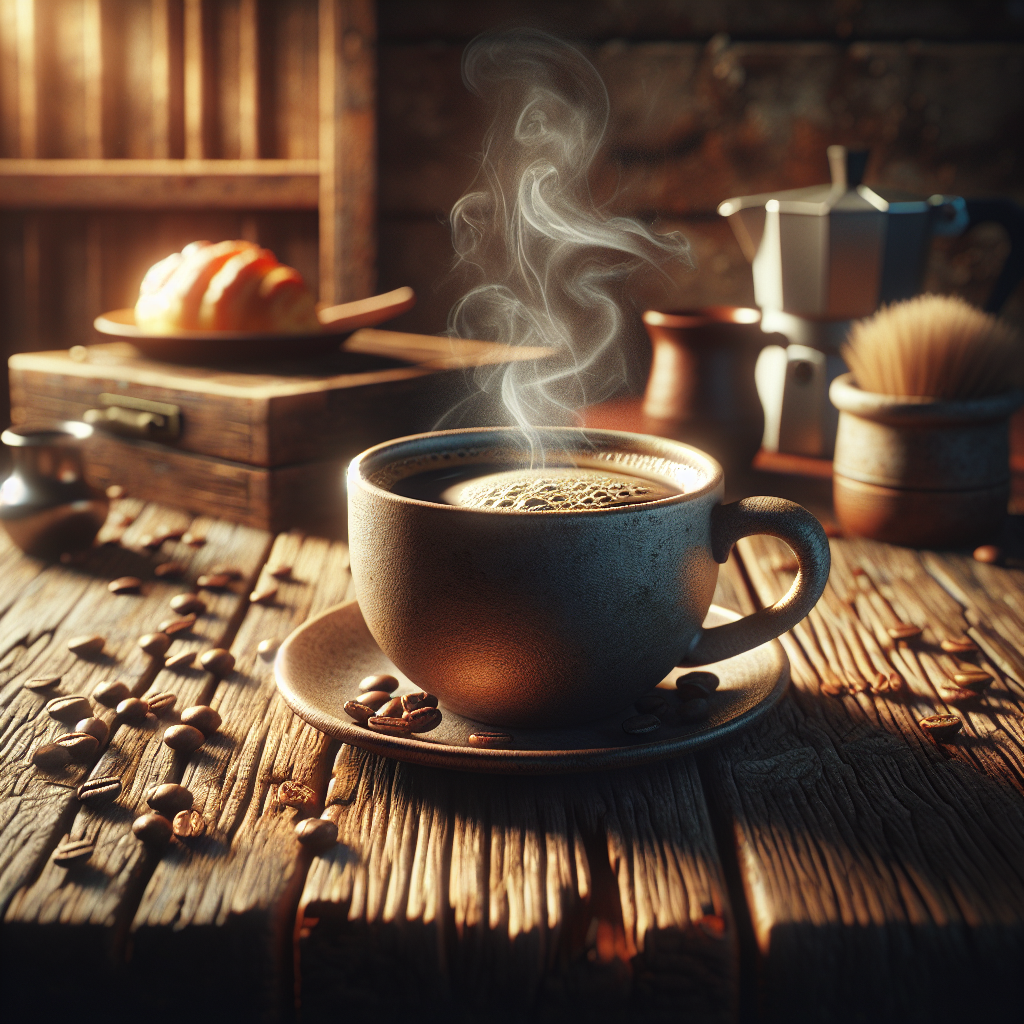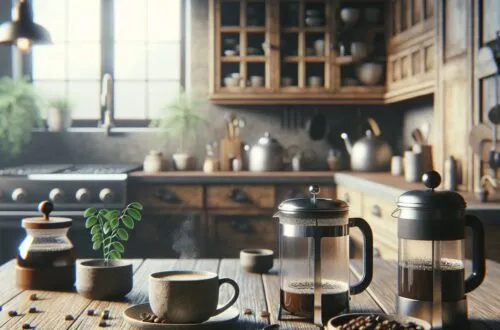“`html
How to Brew a Great Cup of Coffee: A Comprehensive Guide
Brewing a perfect cup of coffee is an art and a science, involving various factors that come together to create the ideal brew. Here’s a detailed breakdown to help you understand the key elements involved.
1. Quality of Coffee Beans
Always choose high-quality, freshly roasted coffee beans as they significantly impact the flavor and aroma of your brew. Pay attention to the bean’s origin (Ethiopia, Colombia, Brazil), variety (Arabica, Robusta), and roasting level (light, medium, dark) to match your taste preference and ensure optimal freshness. Purchase whole beans and grind them just before brewing to maximize freshness. Experiment with single-origin and blended beans for different flavor profiles.
2. Proper Grind Size
The grind size of your coffee is crucial and should be matched to your brewing method. For instance, a coarser grind is best for a French press, while a finer grind is suited for espresso machines. Using a quality burr grinder ensures a consistent grind size. Avoid blade grinders as they produce uneven grinds, leading to inconsistent extraction and flavor. Adjust the grind size accordingly to control the extraction process and influence flavor intensity.
3. Water Quality and Temperature
Use filtered water to avoid any off-flavors from tap water. The optimal water temperature for brewing ranges between 195°F and 205°F (90°C to 96°C), which helps extract the best flavors from the coffee grounds without scorched aromas. Avoid distilled or softened water as minerals are necessary for extracting flavors. Invest in a good quality kettle with temperature control for precision and preheat your brewing equipment to maintain stable temperatures.
4. Coffee-to-Water Ratio
Maintaining a consistent coffee-to-water ratio is vital for brewing a perfect cup. A general brew ratio ranges from 1:15 to 1:18 (coffee to water by weight), ensuring you use about 1 tablespoon of coffee for every 6 ounces of water. Consistency in measurement ensures repeatable results, and using digital scales for precise measurements can help achieve this. Below is a table that details the recommended brew ratios and their respective measurements:
| Coffee Measurement (tablespoons) | Water Measurement (ounces) | Brew Ratio (Coffee : Water) |
|---|---|---|
| 1 | 6 | 1:6 |
| 2 | 12 | 1:6 |
| 3 | 18 | 1:6 |
| 1 | 8 | 1:8 |
| 1.5 | 10 | 1:7 |
| 2 | 14 | 1:7 |
| 3 | 21 | 1:7 |
| 1 | 15 | 1:15 |
| 2 | 30 | 1:15 |
| 2.5 | 37.5 | 1:15 |
| 1 | 18 | 1:18 |
| 2 | 36 | 1:18 |
5. Brewing Time
The time spent brewing will affect the extraction of flavors and caffeine content. Different brewing methods require different times; for example, French press coffee typically requires about 4 minutes of steeping, while pour-over methods require careful timing during water pouring. Adjust these times based on your preferred flavor strength. Using a timer can help achieve consistent results and allows for experimentation to find your perfect balance.
6. Brew Method Selection
The choice of brewing method can significantly influence the taste of your coffee. Popular methods include French press, pour-over, espresso, AeroPress, and drip brewing. Each method has its unique way of extracting flavor and aroma, making it essential to choose one based on your taste preferences and lifestyle. Explore various methods to find your perfect brew, and ensure you have the necessary equipment for each method.
7. Consistency in Brewing
For a great cup of coffee, maintaining consistency is key. Measure your coffee and water carefully, use the same grind size and brew time each time, and consider investing in digital scales and timers for precision. Keeping your brewing equipment clean and in good repair also helps achieve consistent results. Maintaining a brewing journal to track your recipes can aid in refining and replicating your favorite coffee.
8. Storage of Coffee Beans
Store coffee beans in an airtight container away from light, moisture, and heat to preserve freshness. Avoid storing beans in the fridge or freezer as moisture can affect flavor. Buy beans in small quantities to use within a couple of weeks and grind only the amount needed for each brewing session. Using opaque containers to prevent light exposure and considering vacuum-sealed containers can help maintain bean freshness for longer periods.
9. Equipment Quality and Maintenance
Invest in quality brewing equipment that suits your method. Regularly cleaning your coffee maker, grinder, and other equipment prevents the buildup of oils and residues, ensuring the purest flavor extraction. Additionally, descaling coffee makers and kettles periodically to remove mineral deposits helps maintain performance and longevity. Following manufacturer care instructions and maintaining all seals and gaskets are essential for optimal equipment performance.
10. Personal Taste Preference
Recognize that individual taste preferences vary widely. Experimenting with different beans, roast levels, and brewing methods can help you discover your preferred coffee profile. Customize coffee strength, grind sizes, brewing temperatures, and times to suit your palate. Don’t hesitate to add milk, cream, sugar, or flavorings if desired. Keep exploring new coffee experiences to enrich your palate and enjoy the journey of perfecting your coffee-making skills.
By understanding and mastering each of these factors, you can consistently brew a fantastic cup of coffee tailored to your taste preferences. Enjoy the journey of perfecting your coffee-making skills! For more detailed answers to frequently asked questions about coffee, be sure to visit our FAQ section here.
“`
Shop at Breville now!
https://breville.oie8.net/oqDqrE
Shop Coffee Machine at Amazon now!
Click here!





